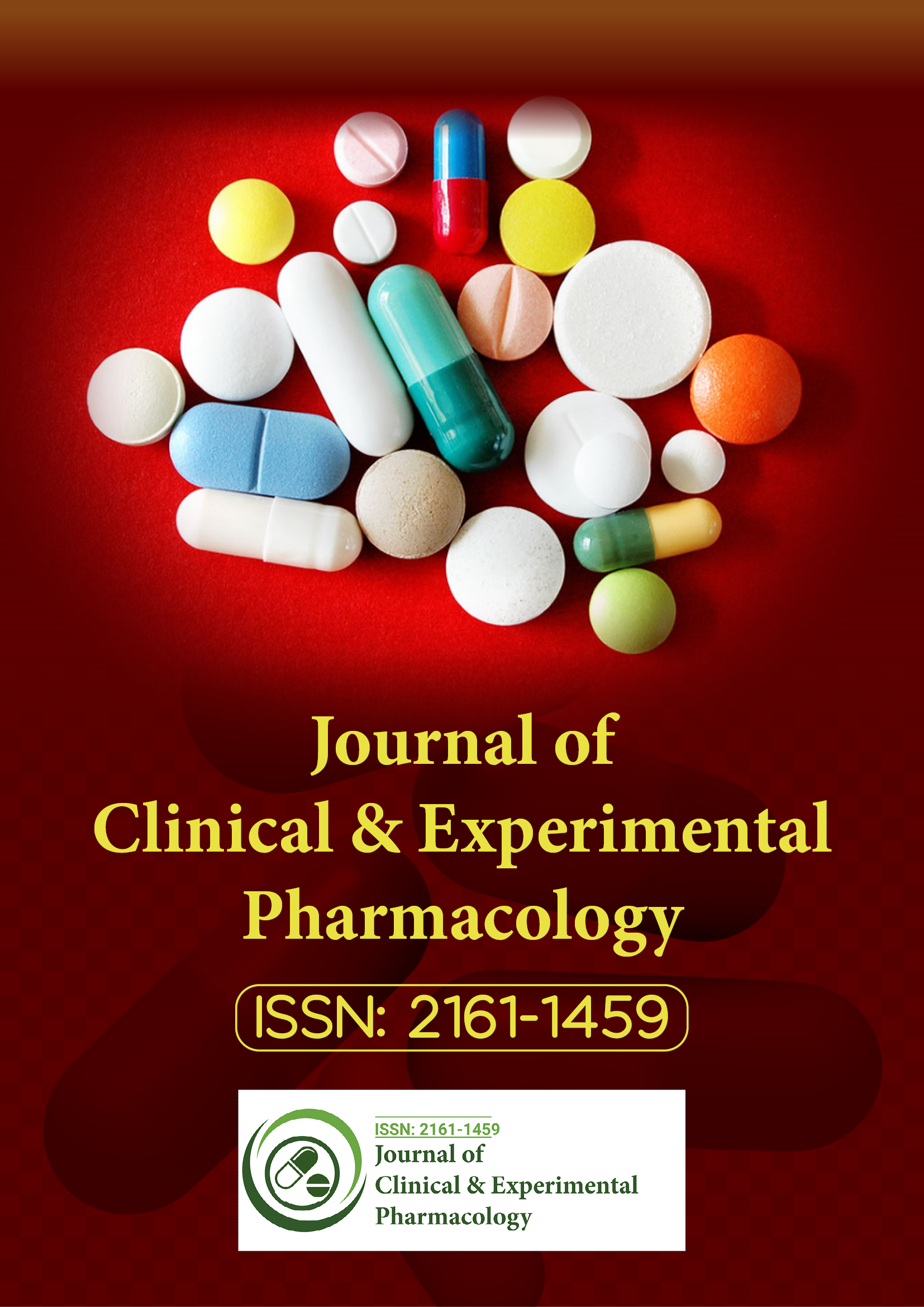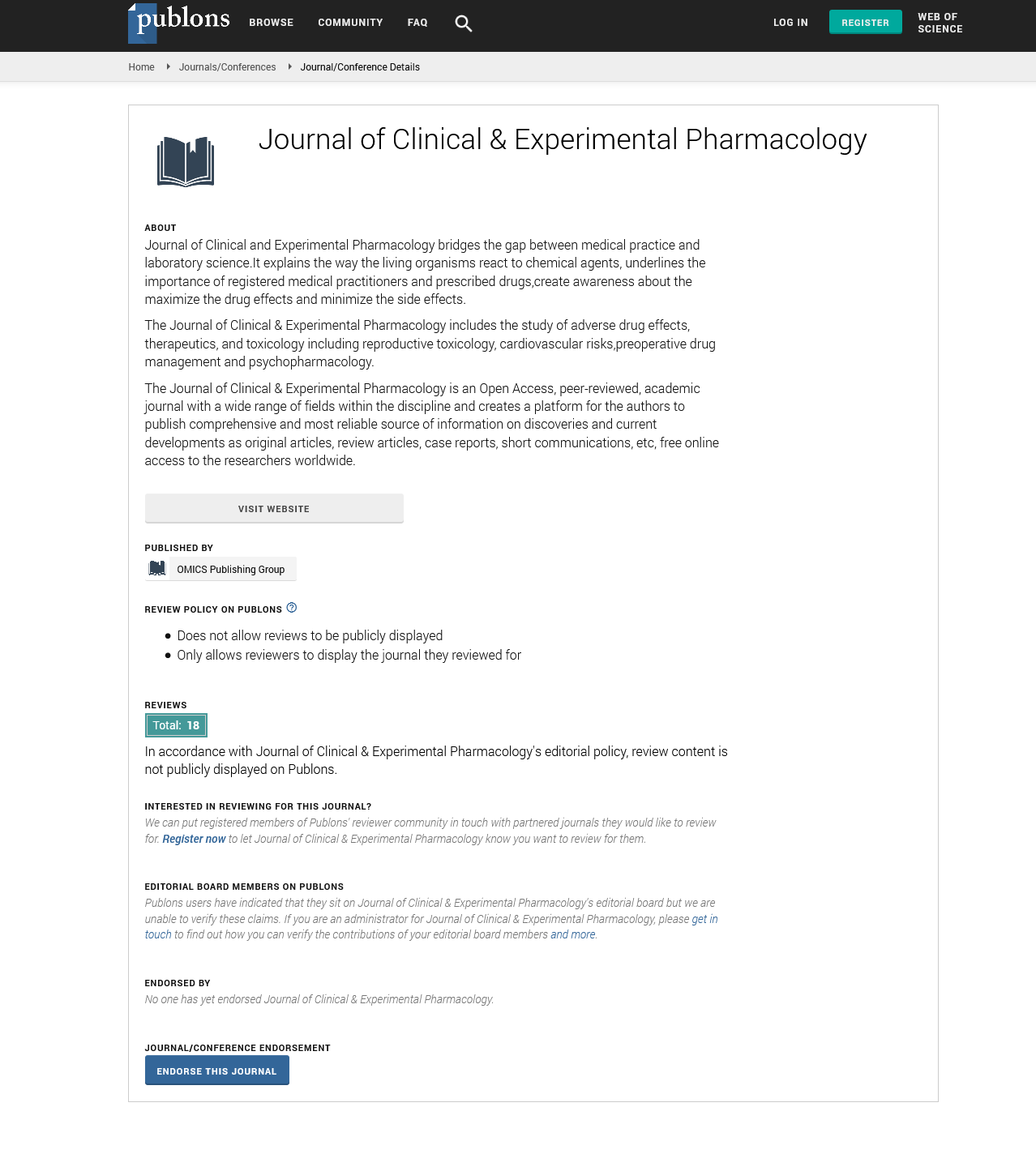Indexed In
- Open J Gate
- Genamics JournalSeek
- China National Knowledge Infrastructure (CNKI)
- Ulrich's Periodicals Directory
- RefSeek
- Hamdard University
- EBSCO A-Z
- OCLC- WorldCat
- Publons
- Google Scholar
Useful Links
Share This Page
Journal Flyer

Open Access Journals
- Agri and Aquaculture
- Biochemistry
- Bioinformatics & Systems Biology
- Business & Management
- Chemistry
- Clinical Sciences
- Engineering
- Food & Nutrition
- General Science
- Genetics & Molecular Biology
- Immunology & Microbiology
- Medical Sciences
- Neuroscience & Psychology
- Nursing & Health Care
- Pharmaceutical Sciences
Perspective - (2025) Volume 15, Issue 4
Neuropharmacology: Understanding Drug Actions on the Nervous System
Sam Bill*Received: 01-Aug-2025, Manuscript No. CPECR-25-29879; Editor assigned: 04-Aug-2025, Pre QC No. CPECR-25-29879 (PQ); Reviewed: 19-Aug-2025, QC No. CPECR-25-29879; Revised: 27-Aug-2025, Manuscript No. CPECR-25-29879 (R); Published: 05-Sep-2025, DOI: 10.35248/2161-1459.25.15.494
Description
Neuropharmacology is the branch of pharmacology that explores how drugs influence the nervous system, encompassing both the Central Nervous System (CNS) and the Peripheral Nervous System (PNS). It integrates neuroscience, pharmacology, and physiology to explain how drugs alter neural communication, affect behavior, and provide therapeutic benefit in neurological and psychiatric disorders. The field has grown considerably as the burden of neurological conditions such as epilepsy, Parkinson’s disease, Alzheimer’s disease, depression, and anxiety has increased worldwide.
At its foundation, neuropharmacology examines the mechanisms by which drugs affect neurotransmission. Neurons communicate through chemical messengers called neurotransmitters, including dopamine, serotonin, glutamate, Gamma-Aminobutyric Acid (GABA), and acetylcholine. Drugs can modulate these systems by enhancing, inhibiting, or mimicking neurotransmitter activity. For example, selective Serotonin Reuptake Inhibitors (SSRIs) increase synaptic serotonin levels, offering relief for patients with depression. Benzodiazepines, on the other hand, enhance GABAergic activity, producing sedative and anxiolytic effects.
Ion channels are another critical target in neuropharmacology. Sodium, potassium, calcium, and chloride channels regulate neuronal excitability and synaptic transmission. Drugs that block or open these channels are widely used to treat epilepsy, pain, and cardiac arrhythmias. Antiepileptic drugs, for example, act by stabilizing neuronal membranes through modulation of sodium or calcium channels, reducing excessive neuronal firing. Understanding channel pharmacology has allowed researchers to design agents with improved efficacy and fewer side effects.
The dopaminergic system is particularly significant in neuropharmacology. Disorders such as Parkinson’s disease and schizophrenia are directly linked to dysregulation of dopamine signaling. In Parkinson’s disease, degeneration of dopaminergic neurons leads to motor impairment, managed by drugs such as levodopa or dopamine agonists. In schizophrenia, antipsychotic drugs act as dopamine receptor antagonists to mitigate symptoms like hallucinations and delusions. These contrasting therapeutic strategies highlight the complexity of targeting neurotransmitter systems.
Neuropharmacology also investigates the role of glutamate, the primary excitatory neurotransmitter. Excessive glutamate release can lead to excitotoxicity, contributing to neurodegenerative disorders such as Alzheimer’s disease and Amyotrophic Lateral Sclerosis (ALS). Drugs targeting NMDA and AMPA receptors are being studied to reduce excitotoxic damage. Similarly, modulation of cholinergic systems has led to therapies for Alzheimer’s disease, with drugs such as acetylcholinesterase inhibitors enhancing cholinergic transmission to support cognition.
Psychopharmacology forms a major subfield within neuropharmacology, focusing on the effects of drugs on mood, behavior, and cognition. Antidepressants, antipsychotics, mood stabilizers, and anxiolytics are developed and optimized through neuropharmacological research. These therapies not only alleviate symptoms but also provide insights into the neurochemical basis of mental illness. The growing understanding of neurobiology has also led to novel treatments, such as ketamine for treatment-resistant depression, which modulates glutamatergic transmission in unique ways.
Neuropharmacology increasingly incorporates molecular and genetic insights. Advances in pharmacogenomics reveal that genetic variations influence individual responses to neuroactive drugs. For example, polymorphisms in genes encoding drug-metabolizing enzymes or neurotransmitter transporters can alter drug efficacy or toxicity. This integration supports personalized approaches, ensuring that therapies are tailored to patient-specific characteristics.
Emerging technologies have transformed the study of neuropharmacology. Functional imaging techniques such as fMRI and PET scans allow researchers to observe how drugs affect brain activity in real time. Optogenetics and chemogenetics provide tools to manipulate neuronal circuits with precision, offering experimental models for testing drug actions. Additionally, stem cell-derived neural models provide new platforms for evaluating neuroactive compounds and understanding disease mechanisms.
Drug development in neuropharmacology faces challenges due to the complexity of the brain and the protective role of the Blood-Brain Barrier (BBB). Designing molecules that effectively cross the BBB without causing toxicity is a key focus of ongoing research. Nanoparticle-based delivery systems and chemical modifications are being explored to overcome these barriers and deliver drugs selectively to the brain.
Conclusion
Neuropharmacology provides essential insights into how drugs interact with the nervous system to influence cognition, behavior and neurological function. By dissecting neurotransmitter systems, ion channels and signaling pathways, the field has produced therapies for a wide range of neurological and psychiatric disorders. With the integration of genetics, imaging and innovative delivery systems, neuropharmacology is evolving to address the complexity of brain function and disease. Continued research promises to refine therapeutic approaches and improve outcomes for individuals affected by neurological and mental health conditions.
Citation: Bill S (2025). Neuropharmacology: Understanding Drug Actions on the Nervous System. J Clin Exp Pharmacol. 15:494.
Copyright: © 2025 Bill S. This is an open-access article distributed under the terms of the Creative Commons Attribution License, which permits unrestricted use, distribution and reproduction in any medium, provided the original author and source are credited.

